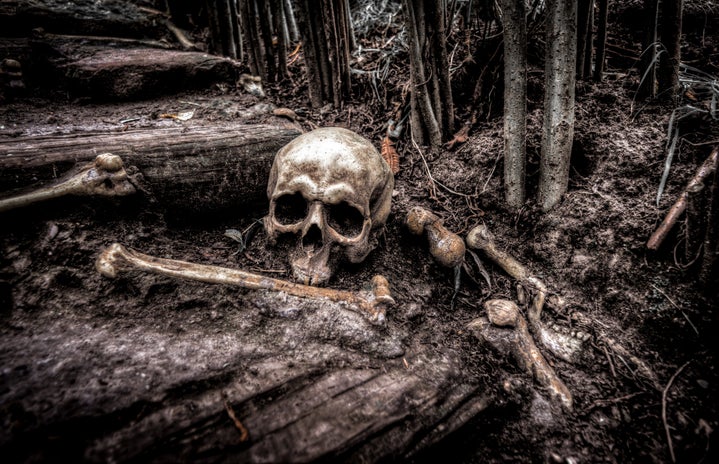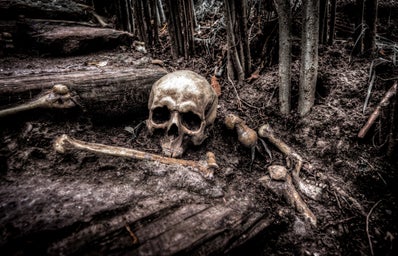The Vampire Diaries, the Twilight Saga, Dracula, Interview with the Vampire. People have been obsessed with the idea of vampires for decades. In the media, they’re portrayed as forever-young, forever-beautiful entities with some sort of melancholic backstory. What’s not to love? However, people haven’t always loved vampires. In fact, vampirism used to be a genuine cultural fear that resulted in actions to prevent deceased loved ones from becoming a vampire! These kinds of “deviant” burials (burials that differ from the norm of the society) have been uncovered by archaeologists and provide a special insight into human fear, and the lengths humans will go to ease their fears.
Related: Best Vampire Movies
In Drawsko, Poland, the skeletons of several individuals were found with iron sickles placed across their throats. Mortuary practices such as this acted as precautions to keep the dead from rising and becoming vampires. Burials of other societies included sandstones placed on the abdomen or the head being removed and placed between the ankles. Not all burials had abnormal traits like these, though. Why not? Why are they not all buried in the same way?
Related: How to Safely Celebrate Halloween With Your Social Bubble
The answer is vampires! Or rather, the fear of vampirism. In Anastasia Tsaliki’s article, “Unusual Burials and Necrophobia,” she explains the reasons why a person might be buried with an iron sickle or a rock on the base of the neck. Unusual burials are usually the result of a person having a visible deformity, or a physical or mental illness in life as well as someone who died an unnatural, violent death or deaths associated with social stigmas such as suicide. Many societies believed that these “abnormal” lives and deaths would create souls that wander the afterlife and terrorize the living. So, an iron sickle around the neck would prevent the deceased from rising from the grave to attack the living by cutting off their heads. Superstitions about vampires during Greece’s “vampire craze” is also where the stereotypical garlic, vinegar, and crucifixes come from!
Related: #MovieWeek: Indulge in the Atrocity of the Twilight Films
What can we learn about humans based on vampire superstitions? That proper burials and death rituals arguably have more of an effect on the living than the dead. Moreover, it suggests that humans are innately uncomfortable around the dead, possibly for survival purposes, and create practices that ease this necrophobia. Preventative actions were taken for the peace of mind of the living, not the safety of the dead. I mean, what do they have to lose anyway?
Happy hauntings!


